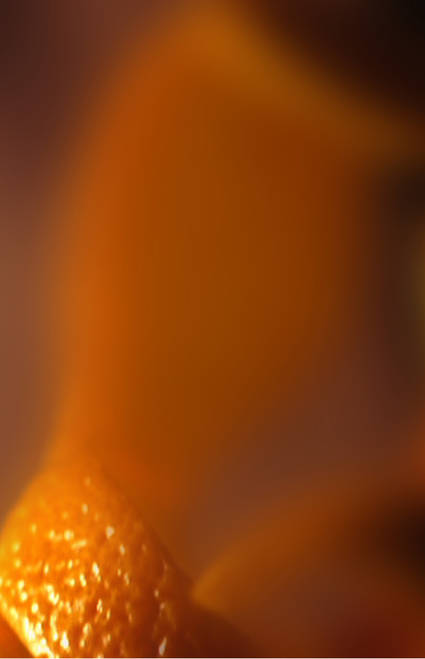Laleh Khorramian's second solo exhibition at The Third Line gallery, Zenith and Nadir combines the spectacle of unfolding human tragi-comedies in picturesque, abstracted and deeply spatial settings of which she has become a master. The title refers to the point of the heavens immediately over the head of the spectator (Zenith) and the opposite point, immediately beneath the spectator's feet (Nadir).
Event:
Zenith and Nadir
Exhibition by Laleh Khorramian

I Without End (6.20 min) is a time-lapse animation featured in this exhibition, which captures a couple in an erotic encounter taking place in their bedroom. The lovers share blissful moments together in their dwelling created by Khorramian, a familiar scene although in this case, the couple are carved from orange peel.
Slightly comical and oddly intent, the lovers rhythmically move together through the motions of life in Khorramian’s ‘Huis Close.’ The animation is emotionally charged, powerful and erotic, however the viewer cannot disconnect from the absurdity of the orange peel as a human metaphor.
As the viewer gets a sense of time passing, the orange peels begin to contort, twisting and tangling into crumbled bodies and their movement subsides. Depicting life, death, love, loneliness, sorrow, creation and regeneration.
Still from I Without End, (6’ 20 ”).
I Without End was originally inspired by a Louise Bourgeois anecdote about her father peeling an orange in the shape of a figure. This piece is the third of five animations which combine the mediums of drawing, painting and cinema. Each of the animations being constructed around a essential element - earth, air, water, space, I Without End being inspired by fire.
In other works on paper, taking reference from Italian Renaissance paintings and theatre, Khorramian’s mono-prints and drawings in oil, crayon, collage, pen and ink are ‘micro views’ and feel as though they are never too far removed from her animations. In these works, microscopic, remote landscapes roll behind fragmented figures with floating narratives. These narratives are based on historic events, ancient myths and biblical themes, often following the journey of a female protagonist.
‘As much as the work is a fiction, it plants itself firmly into the physical realm of the human life and grounds them in specific events,’ says Khorramian. ‘All the same, these scenarios are subverted and de-familiarised through technical interventions (erasing, erasing, redrawing) in order to uncover a deeper level of human experience – to ponder the slippery bounds between experience and the imagined, the real and the ethereal,’ she said.
text from exhibit press release